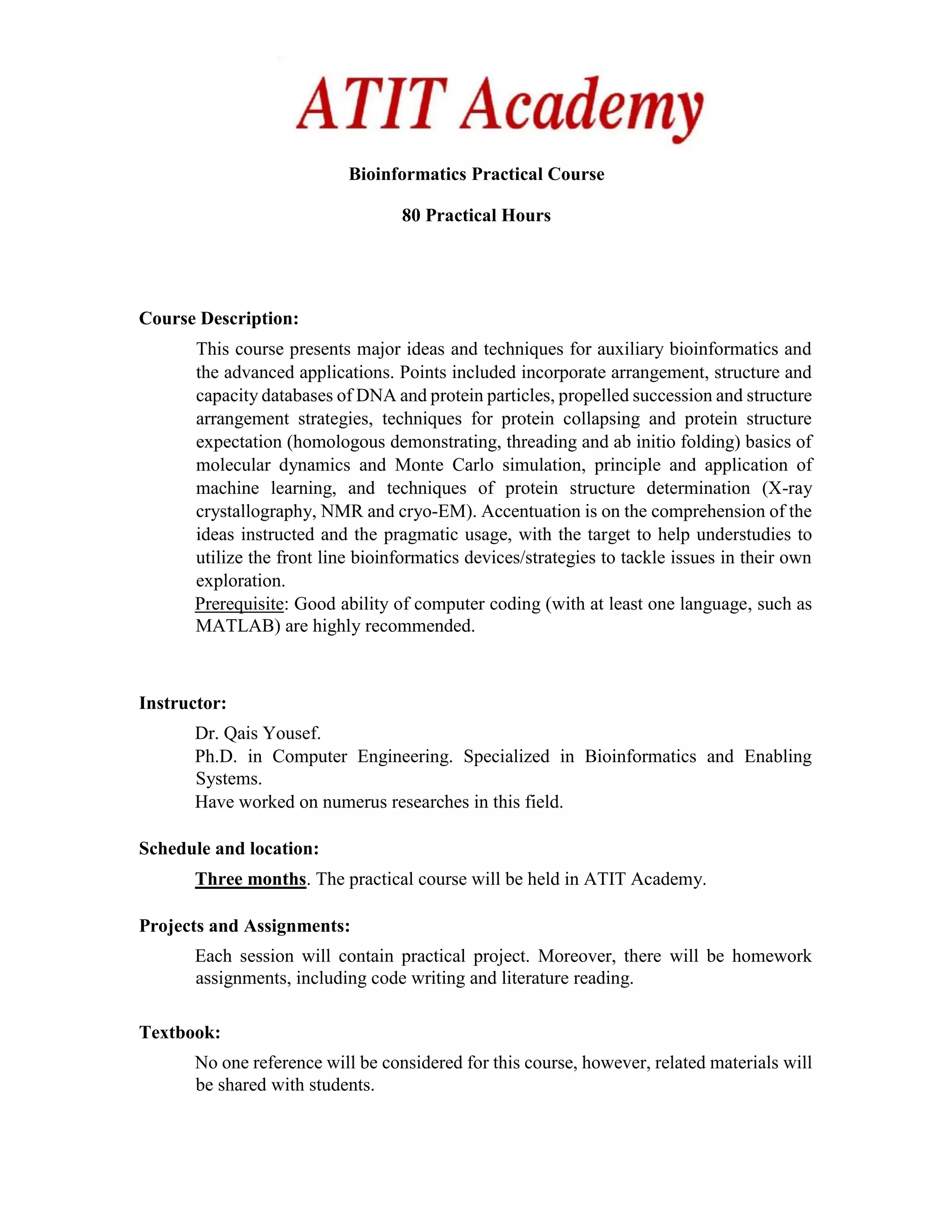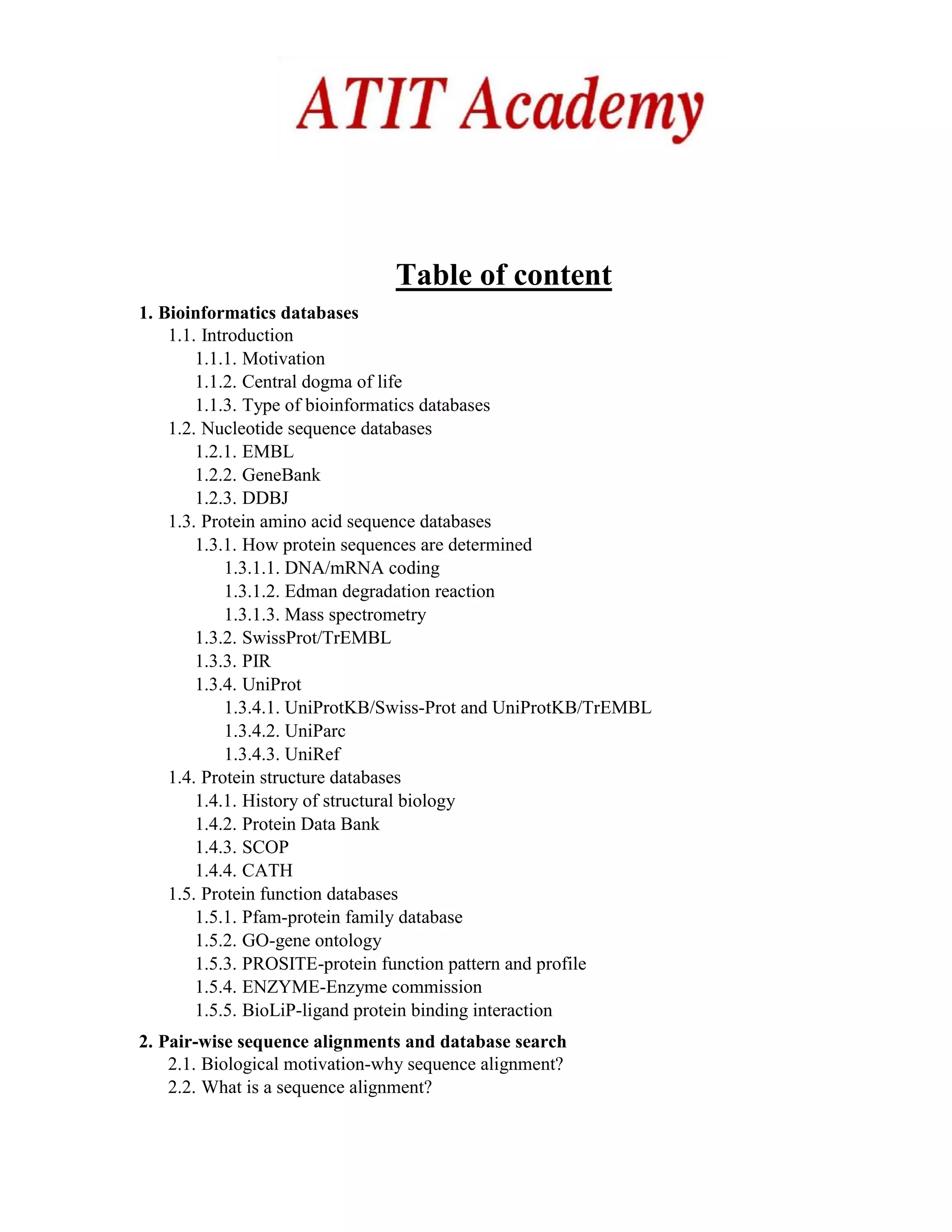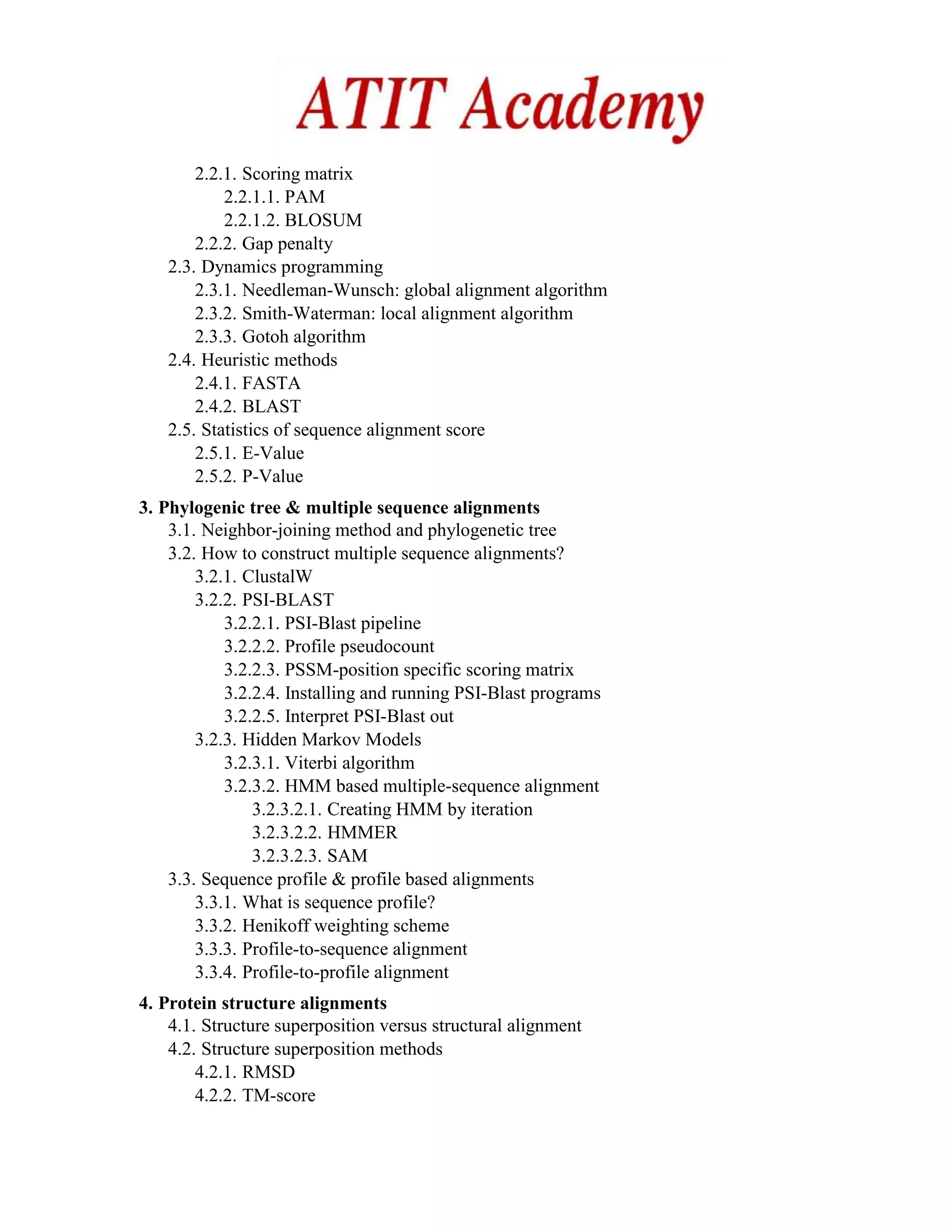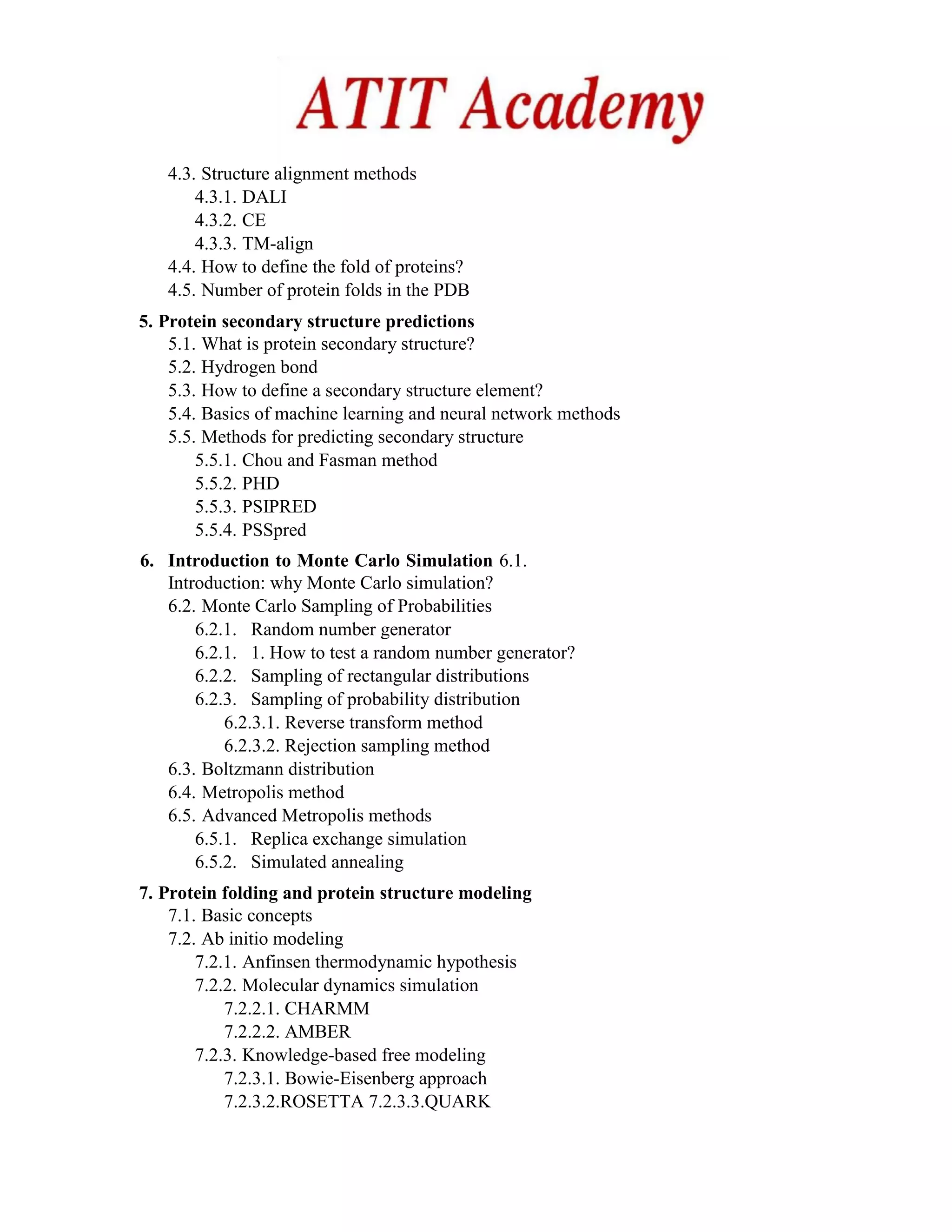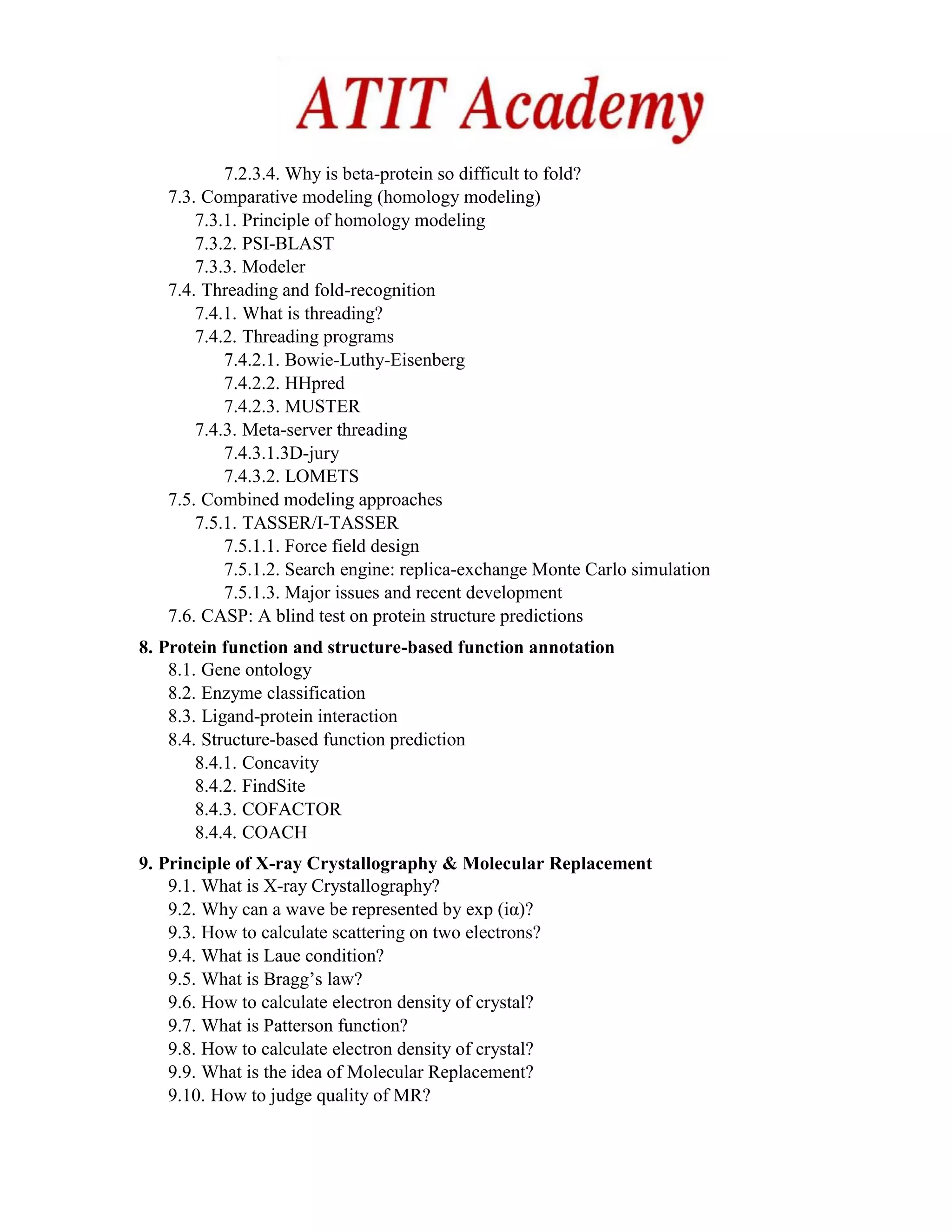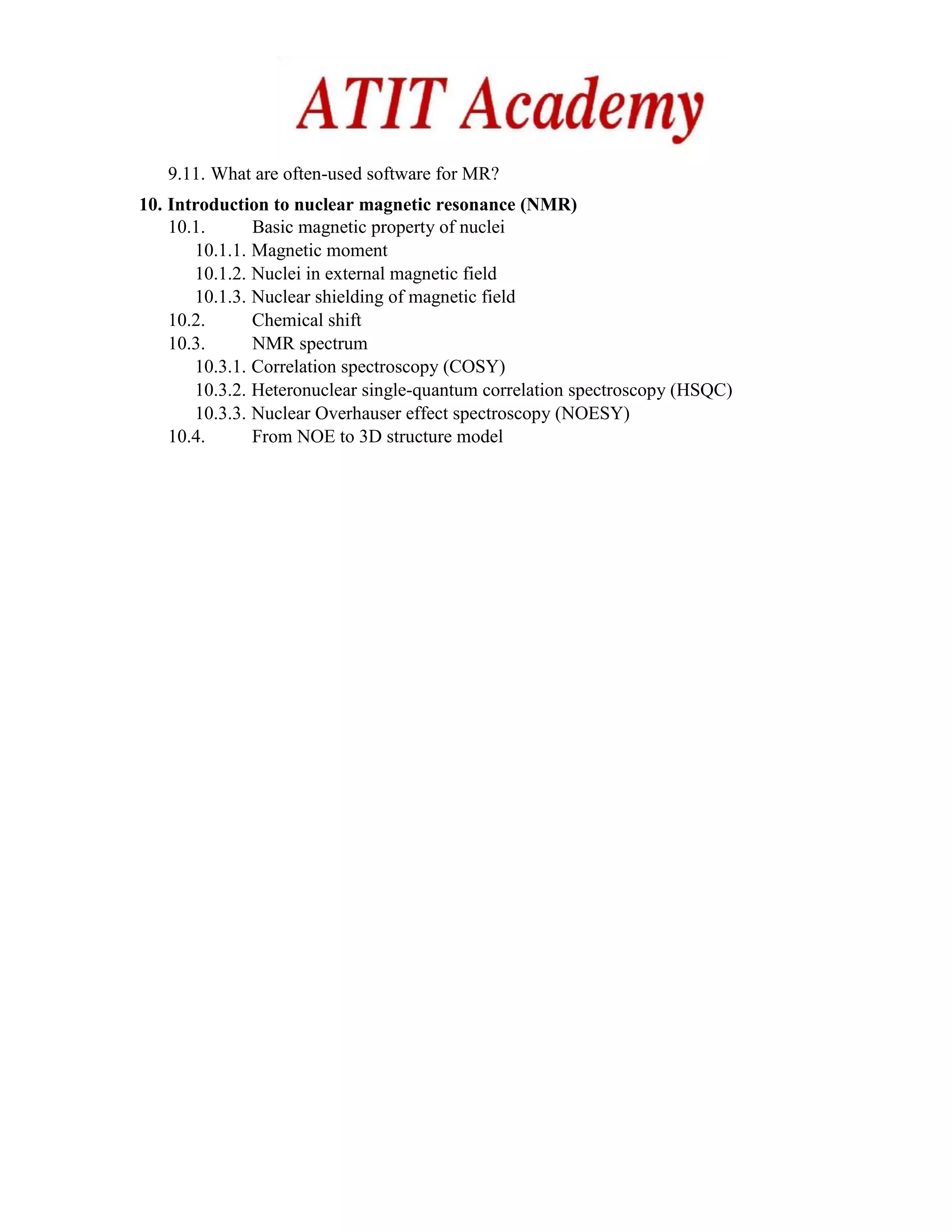This course provides 80 hours of practical training in advanced bioinformatics techniques. Topics covered include biological databases, sequence alignment, phylogenetics, protein structure prediction and modeling, molecular simulation techniques, and protein structure determination methods like X-ray crystallography and NMR. The course emphasizes hands-on practice with bioinformatics tools. It will be taught over three months at ATIT Academy by Dr. Qais Yousef, with practical projects, homework assignments, and no required textbook.
